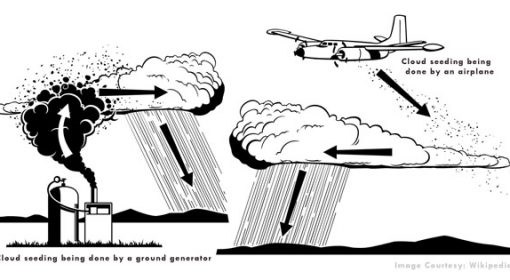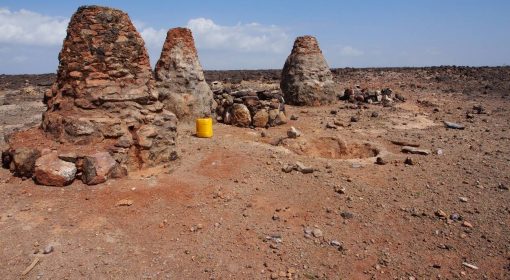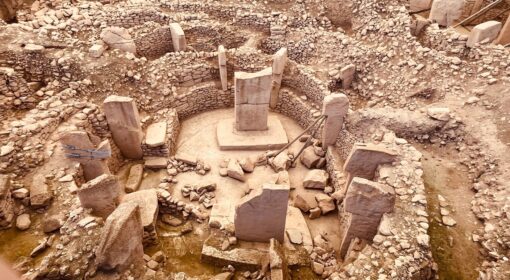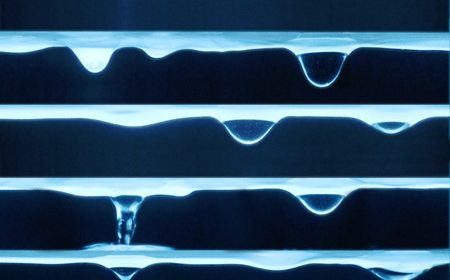By Frank van Steenbergen
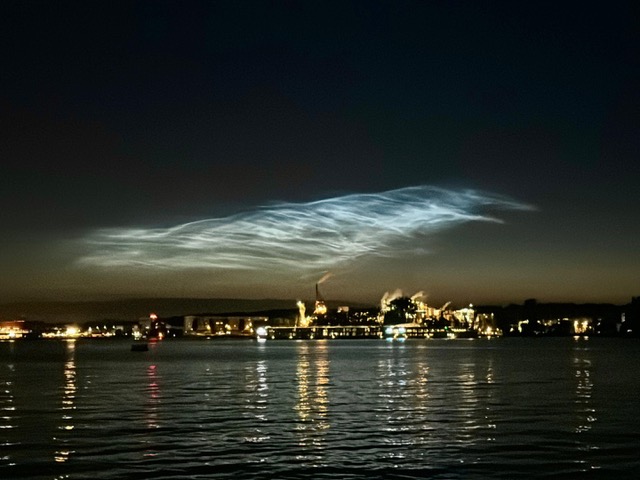
Noctilucent clouds seen over Amsterdam
They are visible very, very rarely: lighting up in some nights, around the solstice. Yet when they light up, they create a specter like no other, lines and hues of glow high up the sky. They are called – true to their appearance – noctilucent clouds: clouds that shine at night. The other name they have describes how they are seen from the sky: polar mesospheric clouds.
These are not normal clouds. The noctilucent clouds are placed an incredible 80 kilometers high at the end of the mesosphere. This is high above the stratosphere where life on earth takes place, and our climate plays out. The air is incredibly thin in the mesosphere. There is some dust, a very little ice vapour: the air is more than 1000 times more arid than the Sahara, yet enough to form thin cuspy clouds. By comparison the clouds we normally see are placed between one to six kilometer above our heads.
They are visible only around the solstice, around midnight and then only at places of 45-55 degrees latitude. The entire constellation has to be right. The sunlight skims the earth. The sky is dark in the earth’s shadow. The sky is absolutely clear. One has to have a wide angle to see. Then there is the chance of seeing the noctilucent clouds.
There is an enigma associated with the phenomenon. Though humans have since time immemorial studied the skies, the first time the noctilucent clouds were reported was in 1885. What is more, though It has always been extremely rare to see the noctilucent clouds, it appears that the frequency by which they appear is increasing. Also, they are now seen at latitudes where they would not be seen before and also at different times, not only very close to the solstice.
What explains the change? Change.
The first 1885 observation has been associated with the mega-eruption of the Krakatau volcano two years earlier. This bellowed enormous amounts of dust in the atmosphere. Skies were darkened, temperatures went down temporarily, the light in the skies changed. Some of the Krakatou dust may have travelled very high upward, reaching the mesosphere – binding the little amounts of water there to make clouds. An additional explanation is that with today’s increased methane releases, some of this rises high up, where it falls apart, creating more water at very high altitudes. Then there is a third explanation: with ever more rocket launches vapour is directly transported into the mesosphere. And so, when we see the mesospheric clouds light up so high, we are reminded that change is everywhere, not just immediately around us but at large distance too.
From the Book of Rain
